Article's Content
Mattresses are one of the most effectively promoted products on the market today. Leading the charge are direct-to-consumer companies such as Casper, Purple, Nectar, and Leesa, which are employing clever strategies to connect with customers and generate stronger SEO performance amid the highly competitive “Mattress Wars.”
Even if you’re not an e-commerce business, and even if you’ll never sell a single mattress in your life, it’s important to understand the SEO battles happening within the mattress industry. It’s obviously hyperbolic to call it a war, but the word seems appropriate when there are so many companies aggressively maneuvering every day for more traffic and clicks.
In this piece, we’ll talk about some strategies being put to use by some of the toughest new competitors in the industry. How well are their efforts working? In an industry dominated by legacy brands like Serta and Sealy, these upstarts are seeing impressive results.
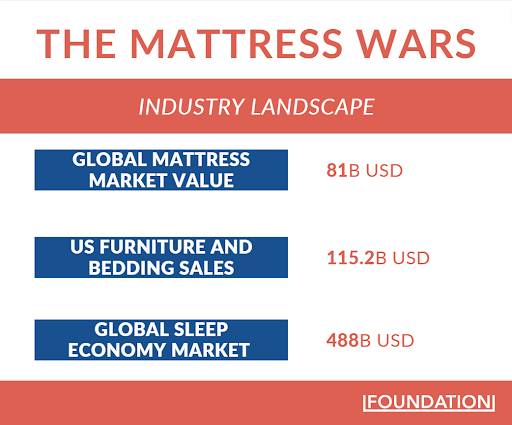
The global mattress market is projected to grow by $13 billion over the next five years, and a key driver of that growth is the rise of these online “bed-in-a-box” brands. With 47% of customers reporting that they prefer shopping for mattresses online, it’s a game-changing model that is consistently chipping away market share and gaining customer loyalty.
An Industry Primed for Disruption
But it wasn’t always this way. Mattresses have historically been viewed as bulky products that most consumers didn’t know much about. And the experience of buying one used to be as dreary as going to the dentist.
You’d walk into your local showroom and explain to the hyped-up salesperson that you were looking for a reasonably-priced mattress. They’d predictably ignore all that and steer you to some “PowerSpring 3000” mattress with a hefty price tag.
What would this mattress feel like when outfitted with your bedding? How well would it support you during the many hours you’d be sleeping on it every night?
These answers were inaccessible in the old model. There was no in-home testing possible, and access to user reviews was limited. If you were to ask the salesperson for an expert opinion, they’d affectionately pat the PowerSpring 3000 and say, “Trust me, you’re gonna want to go with this puppy. With innerspring unit construction like this, you’ll be sleeping a lot better.”
Of course, you’d have no idea if the salesperson was right. The only thing you’d know for certain is that the industry was dominated by legacy brands that mark up their mattresses extensively to cover retail overhead and the commission your salesperson was so earnestly seeking.
The Explosion Mattress-in-a-Box Solutions
Casper shook things up in 2014 with a direct-to-consumer model that removed the showroom stress and exorbitant markups. Using new packaging techniques, they were able to put their mattresses in boxes. Not only did this greatly reduce shipping costs, but a customer could now carry their new mattress to their bedroom without knocking all the pictures off their walls on the way there.
Casper also eschewed the massive product lists of legacy brands so that customers wouldn’t feel overwhelmed and could more easily access product information before purchasing. And they offer a 100-day trial and 10-year warranty to mitigate issues around buying confidence. Shipping is free, so the liability of making a purchase is zilch.
Following on the heels of Casper were competitors such as Purple, Nectar, and Leesa. The direct-to-consumer playbook had already been laid out, so these other direct-to-consumer mattress companies offer a similar experience.
With about 175 new mattress companies on the market (unthinkable in the old days of Serta and Sealy domination), the danger becomes brand blurring and anonymity. How do you stand out on Google when your product is so similar to the rest?
The Battles Behind the SERP
Given the creative strategies being used by mattress companies, it’s safe to say that what you’re seeing on Google results has been highly impacted from multiple angles. If you search “Casper vs. Purple,” which is happening regularly because these are the two top brands, you’ll get more than 24 million results. On that crucial first page, you’ll be served up two Casper product ads right off the bat, and nectar and Purple, then squeeze in a product ad each to round out the first row.

Below that, Casper has an excellent ad that uses the term “Casper Vs. Purple” and provides a follow-up stating that their product is “The Best Bed for Better Sleep.” This is a great way to capitalize on that real estate and use the consumer’s question to tout their product.
Following the Casper ad is an ad for Afloat mattresses, which are actually filled with water. Although many people consider waterbeds a relic of the ‘80s, it’s nice to see that someone is keeping the idea alive.
Under those ads come the organic results. First up is a review from SleepFoundation.org. Their name certainly sounds official, and their website features medical advice from a “scientific advisor.”

But if you dig a little deeper, you’ll discover that the Sleep Foundation is part of OneCare Media, an affiliate marketing website. The “Casper Vs. Purple” analysis on the search results page doesn’t do much to answer the question of which is better. But it does offer a 25% discount on all Casper mattresses:
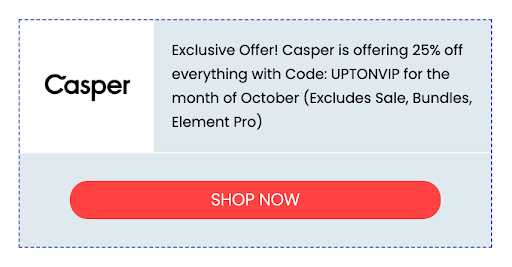
In this way, Casper can disguise an advertisement within what looks like an official source of information.
Next up in the results are a pair of reviews from Mattress Clarity and Sleepolis, which are both affiliate marketing sites owned by Pillar4 Media. Once again, mattress brands use strategic partners to promote their products to consumers who think they’re getting an objective opinion.
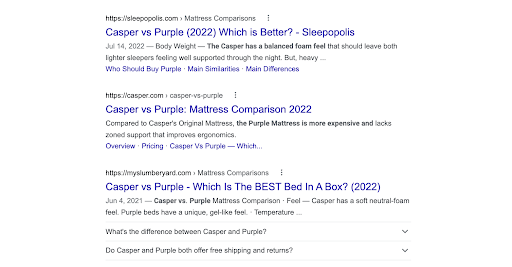
Following these affiliate posts is a landing page created by Casper to answer the question of whether their mattresses are better than Purples. The page is user-friendly, engaging, and informative. It’s a major win for Casper to rank so well with it, as it’s yet another friendly touchpoint for them here on the results page.
You’ll then see a review from Slumber Yard, which is… you guessed it, an affiliate marketing website. Toward the bottom of the page are a couple of promoted reviews from MattressVerdict.com and BestMattressOnline. Not only are these affiliate marketing websites, but their disclosures lay out the tactics of the Mattress Wars in stunning clarity.
![]()
![]()
These heavily influenced reviews do more than simply tell consumers that a certain brand’s products are better. They also support the link-building strategies that are helping direct-to-consumer mattress companies boost their SERP results.
Casper’s paid search traffic is solid at 62,000 a month, while organic search traffic tops two million. Note the number of backlinks, with more than 557,000 coming from 16,000 different domains.
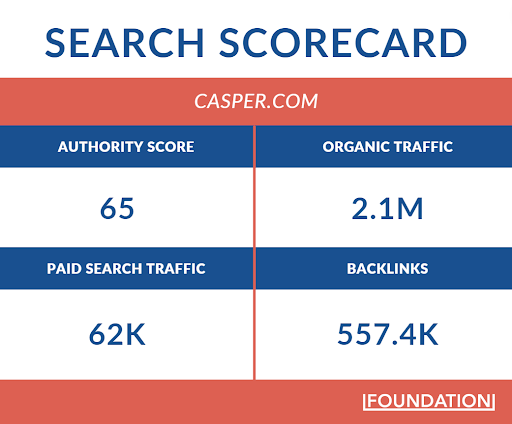
Many of those backlinks originate from review platforms and sister sites that are touting the brand’s benefits. This brings customer-focused marketing value on the front end, followed by SEO value on the back end—the double whammy that makes link building such a powerful strategy.
Purple leans harder into paid search traffic, with substantially fewer backlinks coming from fewer domains. While many factors are likely responsible for their lower organic search traffic, including the fact that they haven’t been on the market as long as Casper, the smaller number of backlinks and referring domains is a big one. You simply cannot afford to neglect this aspect of SEO.
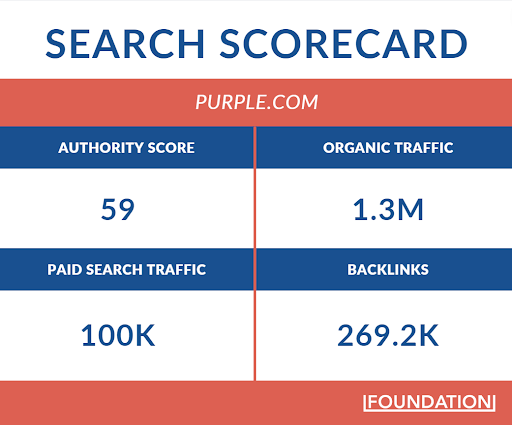
It should be noted that you must build your backlinks with an emphasis on quality and relevance. Buying a bunch of low-quality backlinks might seem like a quick fix, but it will only hurt you in the long run. Instead, invest in partnerships and find new ways to get your products involved in various reviews and features.
Nectar performed better on the paid search side of things than Casper and Purple while also doing an admirable job with their link-building. But organic traffic didn’t perform as well, though it’s not necessarily an indication of strategic shortcomings. Nectar is simply a smaller brand that lacks the ardent fans enjoyed by Casper and Purple.
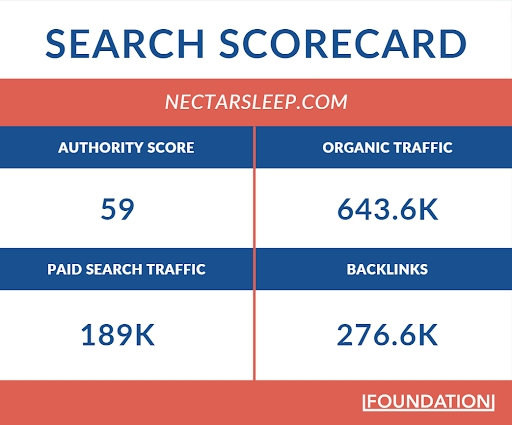
Leesa falls even further down in the direct-to-consumer mattress pecking order, as seen in their most recent stats:
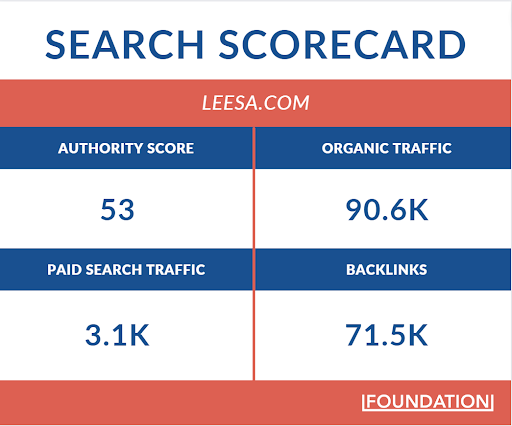
While Leesa’s smaller budget and market share are on full display, their link-building efforts bode well for the future. Developing a network of referring domains is a blueprint many smaller brands use to grow within their industries. And, more often than not, they succeed.
Using Advertising to Drive SERP Traffic
Rising to the top of a crowded field always requires clear and consistent touchpoints with customers. For example, Casper’s product descriptions don’t highlight industry jargon like “innerspring unit construction.” Instead, they focus on how their products solve problems. So the quick description for the Wave Hybrid reads: “Our most ergonomic mattress to ease aches and pains.”
As many of us suffer from various aches and pains, a promise like that can spur an emotional resonance. And it’s not just about physical ailments. Casper also addresses the industry’s pain points in ways that nobody had in the past. Consider this messaging featured on their website:

This is empathy in action. The folks from Casper have done their research and can relate to consumer struggles. Conversely, you’d never catch the marketing teams from Serta or Sealy writing something like this.
Casper and its direct-to-consumer competitors also realize that it takes more than one perspective to tell a complete story to your customers. They leverage affiliates, influencers, sister sites, and other complementary sources to catch eyeballs and ultimately drive customers to their products.
Casper and other direct-to-consumer mattress brands use empathetic communication to differentiate themselves from legacy brands. Let’s evaluate their top-performing Google Ads to see how they connect with consumers.




Casper and Purple are leading the charge when it comes to SERP traffic, so it’s no surprise that their ads use carefully chosen language that addresses pain points and provides solutions.
For example, Casper promises “ultra comfortable” products to help people “reset their rest.” And Purple touts a “high quality mattress” that eliminates tossing and turning, so you can wake up feeling rested.
While Nectar promises similar solutions in their ad, using the hyperbolic promise of “the most comfortable sleep ever,” Leesa focuses on solutions other than sleep-related pain points. Instead, their ad promotes savings and convenience (which are definitely pain points for people accustomed to making mattress purchases in showrooms).
Compare these ads to a Google Ad from Sealy, one of the legacy brands that has dominated the industry for decades. There is no reference to why their mattress is superior or how it will impact your life. No evocative and aspirational phrase like “Start waking up feeling rested again.”

Sealy’s ad merely leans on their stature, which might sway some shoppers. But when direct-to-consumer brands offer free 100-day returns, the traditional risk factors surrounding a mattress purchase decrease substantially. It’s no longer costly and inconvenient to attempt a return to the store, meaning this ad probably would’ve been more impactful before Casper entered the market in 2013.
Now let’s look at how each of these five brands, the four relative newcomers and the longtime champ, compare in web searches over the past year.
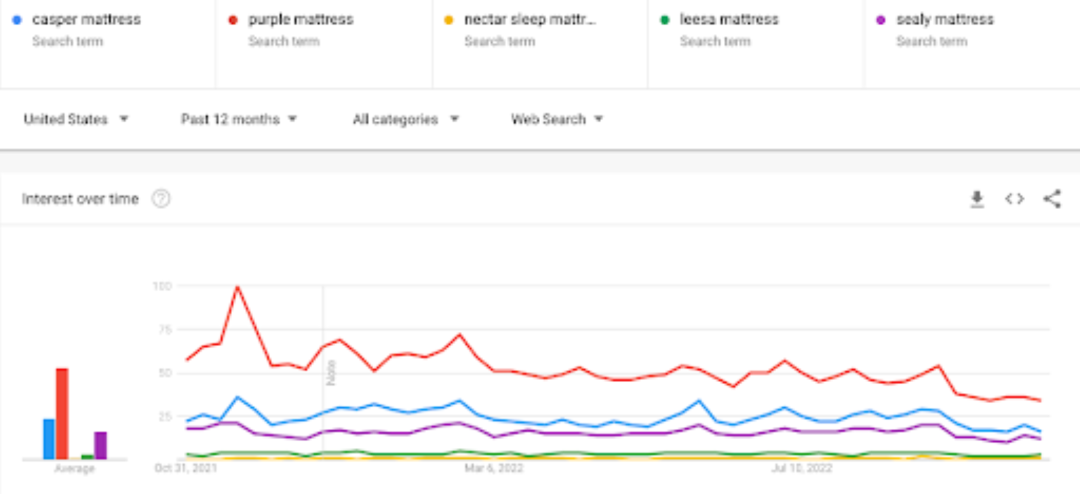
Purple is the clear winner, with Casper and Sealy claiming the next two spots. Nectar and Leesa are far below the others, but it’s worth pointing out that Sealy is closer to those lower-tier brands in search volume than Purple.
Using Comprehensive Marketing Efforts to Drive SERP Traffic
These direct-to-consumer mattress brands are obviously doing a lot more to impact their SERP performance than just developing backlinks and running Google Ads. Their display ads and other marketing efforts generate clicks from customers and help build awareness that pays off later in organic search traffic. So don’t sleep on the brand awareness aspect of SERP optimization.
Casper leans heavily on endorsements and reviews, which is reflected in its impressive array of backlinks. The ads below highlight this strategy, using Business Insider and Kim Komando (a consumer tech guru) to vouch for the brand and spur customer action.
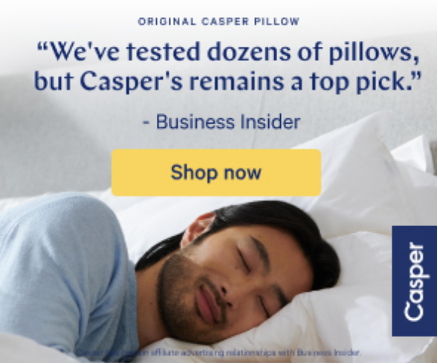
And the brand isn’t shy about having its celebrity partners promote their mattresses on social media. It’s got to be considered a win to have Mario Lopez posting about Casper to his two million Instagram followers.
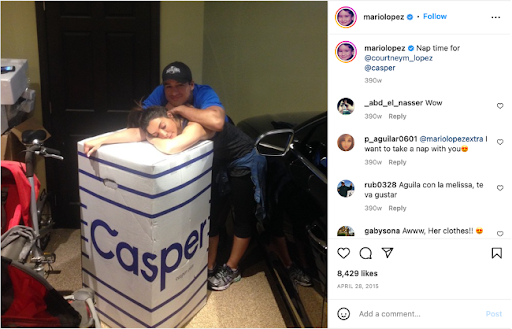
But the following post from Kylie Jenner (who boasts 372 million followers on X [formerly known as Twitter]) truly put the company into rarified air. Say what you will about the Kardashian clan, but it’s undeniably powerful when a public figure with hundreds of millions of fans endorses your product.
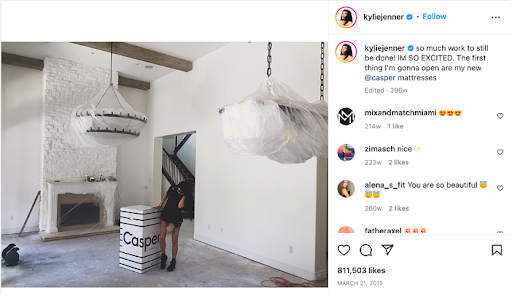
Purple uses similar endorsements from influencers and review platforms in their marketing but also lets regular customers make their voices heard. This approach can be effective, as the authenticity might ring truer than with a paid post from a celebrity.

These mattress companies are allaying fears and driving sales by providing testimonials, third-party reviews, social proof, and emotionally resonant solutions to common pain points. Their efforts have the complementary effect of generating backlinks and providing the ingredients for effective Google Ads, leading to better SERP performance.
Improving Your Own SERP Performance
Whether you’re trying to sell consulting services or orthopedic shoes, there are plenty of takeaways from the online mattress wars. Let’s review a few key strategies you can employ to attract more organic and paid search traffic:
- Take the time to understand your customers’ needs and deliver a unique solution. Clearly articulate your brand’s benefits in your paid ads and metadata.
- Use link-building to improve your SERP performance. Work with sister sites, partners, reviewers, and industry figures to collect an array of relevant links from reputable sources.
- Use this same network of sites and blogs to offer valuable content that also highlights the benefits of your brand.
- Build confidence in your brand and drive organic search traffic by sharing positive reviews and generating social proof with influencers and prominent industry figures.
As a final note, you should also remember that the best business models are flexible. Rather than being set in stone, your business should be able to evolve as it scales to serve more customers. Casper brilliantly disrupted the mattress industry with its direct-to-consumer model, but that doesn’t mean they don’t see value in the showroom.
Casper has multiple brick-and-mortar locations where customers can test out their mattresses before making a purchase. And the brand also partnered with Target, which puts its products in nearly 2,000 stores nationwide.
Not to be outdone, Purple has partnered with Mattress Firm. This is a major move as their mattresses will be displayed in more than 3,500 showrooms across the country. Likewise, Leesa signed a partnership with the retailer West Elm.
These evolutions are impressive because they show that the direct-to-consumer mattress brands are more concerned about the customer experience than sticking to what has defined their products up to this point. You will always come out ahead by using your customers’ pain points as your North Star and then providing impactful solutions.







